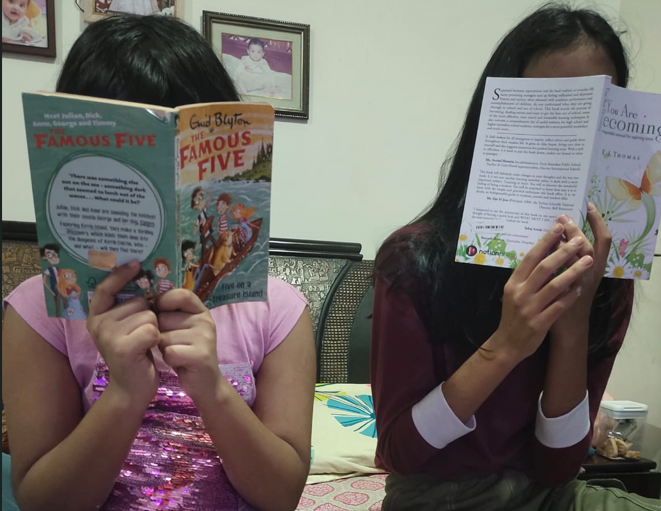How to Ensure Online Safety of Kids: A Busy Mom’s 3 Battle-Tested Strategies

As a mother of two daughters (a curious 7-year-old and a hormone-powered preteen), I have realised how difficult it is to parent kids in today’s digital era.
As a parent, you need to keep your inner Sherlock Holmes awake 24/7. But I’ve also learned that parenting needs equal parts vigilance and trust.
Kids today have access to a reservoir of information because the internet offers incredible opportunities for learning and connection.
But it has its flipside.
It also exposes kids to risks like cyberbullying, inappropriate content, and screen addiction.
The Netflix series Adolescence depicted the evils of the online world accurately.
But how to ensure the online safety of kids?
Does that mean we need to use draconian methods to keep our kids away from the internet?
I have realised that the more restrictions you impose, the more tempted kids will be to try the forbidden fruit.
So over the years, I’ve developed strategies that balance safety with trust and independence. These strategies are as per my daughter’s age and maturity levels.
Here’s how to ensure the online safety of kids
1. Age-appropriate boundaries
For my 7-year-old: She is not allowed to use the phone (only when she needs to talk to her friends, she uses the phone). Once in a while, she gets to watch her favourite cartoon or series on my phone (but that’s not for more than 30 minutes).
YouTube is connected to our TV, and she can watch her favourite shows there. No social media for her.
To convince her, we used the internet as a tool.
How?
Here are some interesting videos that I showed her:
And many more.
After watching them, she decided to stay away from social media and the online world. Thankfully, kids in her school and our society are not into social media, and most kids’ parents make sure that they go out and play with friends instead of staying indoors, glued to their mobile phones.
For my preteen: She uses my email ID, and it’s synced on my phone. She can use the phone for 1–1.5 hours.
No Instagram, Facebook, or Snapchat for her until she is 18.
2. The YouTube Compromise
When my 12-year-old begged for a channel, we negotiated:
a. No face, school logos, or home footage
b. 1.5 hours/week max (filming + editing)
c. Mom as “co-manager” with login access
Her faceless channel is growing, and to help her cope with the unavoidable internet negativity, I showed her this
3. Screen Time Wins & Struggles
I encourage them to read books. We have a competition to see who reads the most pages.
My elder one wins every time in the competition.
In the evening, they go out to play for at least 2 hours. We have never forced them to join classes, but my elder one loves basketball, and my younger one has joined Kathak Dance classes.
Lockdown turned Roblox into an obsession for my elder one, but slowly she has stopped playing that too.
Kids are smarter than we used to be as kids. I remember switching off the TV, fearing my father would be angry.
Motherhood taught me one big lesson: Scolding and dictating are not the solution. They may work temporarily, but they can do irreparable damage to a parent and kid relationship’s bond.
Instead, talking to them and leading by example are the best policies.
I cannot tell my kids to read a book if I am glued to the screen 24/7. Before lockdown, I completely stopped reading books, stating a lack of time as an excuse.
Now, I read at least 10 pages every day. My daughters notice that. I have shared some book recommendations. You can go check them for your teens:
Journaling has become my anchor. I practice it daily and gently encourage my daughters to join me.
While they’re still inconsistent, I trust the habit will grow with time (just like their love for homemade food eventually did!).
As for screens, I’ve drawn clear boundaries: no phone until 9 AM, as my mornings are for quiet reflection, and screens off by 9 PM to protect my sleep. It’s non-negotiable, and that discipline has become my secret weapon for staying present.
Eliminating the screen is not the solution, but teaching the kid to use technology responsibly can be one.
Clear boundaries and open conversation have helped us immensely to ensure our kids’ online safety so far.
The strategies evolve as they grow, but the core principles remain: trust over control, guidance over restriction, and always keeping those lines of communication wide open.
